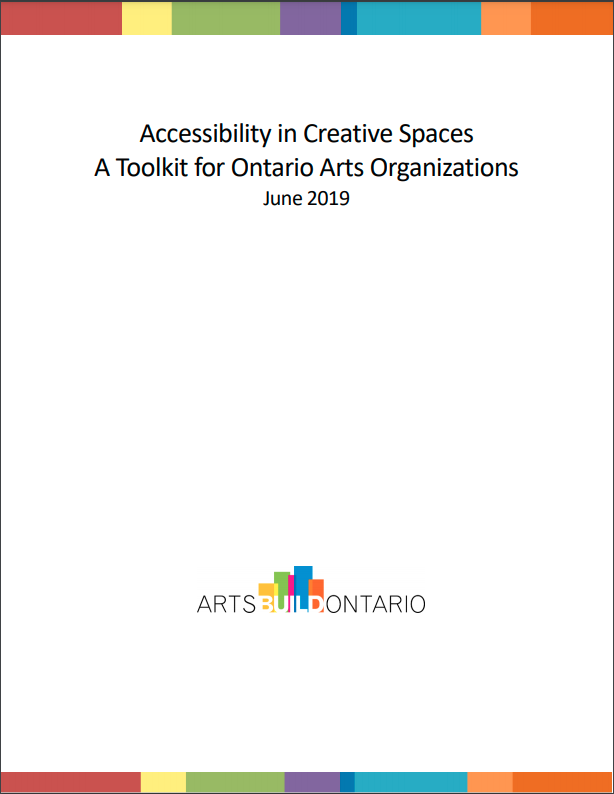Created by ArtsBuild Ontario (2019)
In ArtsBuild Ontario’s (ABO) Bricks&Mortar database – that houses information on over 400 arts organizations in Ontario – accessibility was identified as the number one capital project planned by facilities to be done within in the next five years. ABO wanted to respond by providing its network with the help and resources they might need to achieve their goals.
Arts organizations and their spaces generally work within four operating models:
- Space is independently owned and independently operated
- Space is privately owned and independently operated
- Space is government owned and independently operated
- Space is government owned and government operated
Each of the above operating models will have different responsibilities when making their space accessible – both in the built and experiential environments. For example, an arts organization in a heritage building with under 10 staff is going to have different Accessibility for Ontarians with Disabilities Act (AODA) compliance requirements than a municipality planning to build a new art gallery. Various factors can determine an organization’s unique compliance requirements within the Ontario legislation as well as financial and capacity resources to create accessible space. To review the AODA and Design of Public Spaces Standard, please refer to the legislation requirements: https://www.ontario.ca/laws/statute/05a11
In this toolkit, ArtsBuild provides some basic resources about accessibility legislation in Ontario, including the AODA and Design of Public Spaces Standards, Ontario Building Code and Human Rights Code.
While this toolkit will provide resources for best practices in the built environment, it will also focus on experiential accessibility including how arts organizations are going beyond the built environment to offer inclusive space.
Resources in this toolkit are taken from Ontario, Canada and international sources. While readers can glean best practices from other examples beyond our province, it is important to note responsibility to follow accessibility laws pertaining to Ontario and Canada.
All topics and resources have been identified and supported by an Accessibility Advisory Committee all of whom are leaders in the arts sector, as well as DesignABLE Environments. This toolkit is supported by the Government of Ontario.
Click the image below to access the toolkit.
